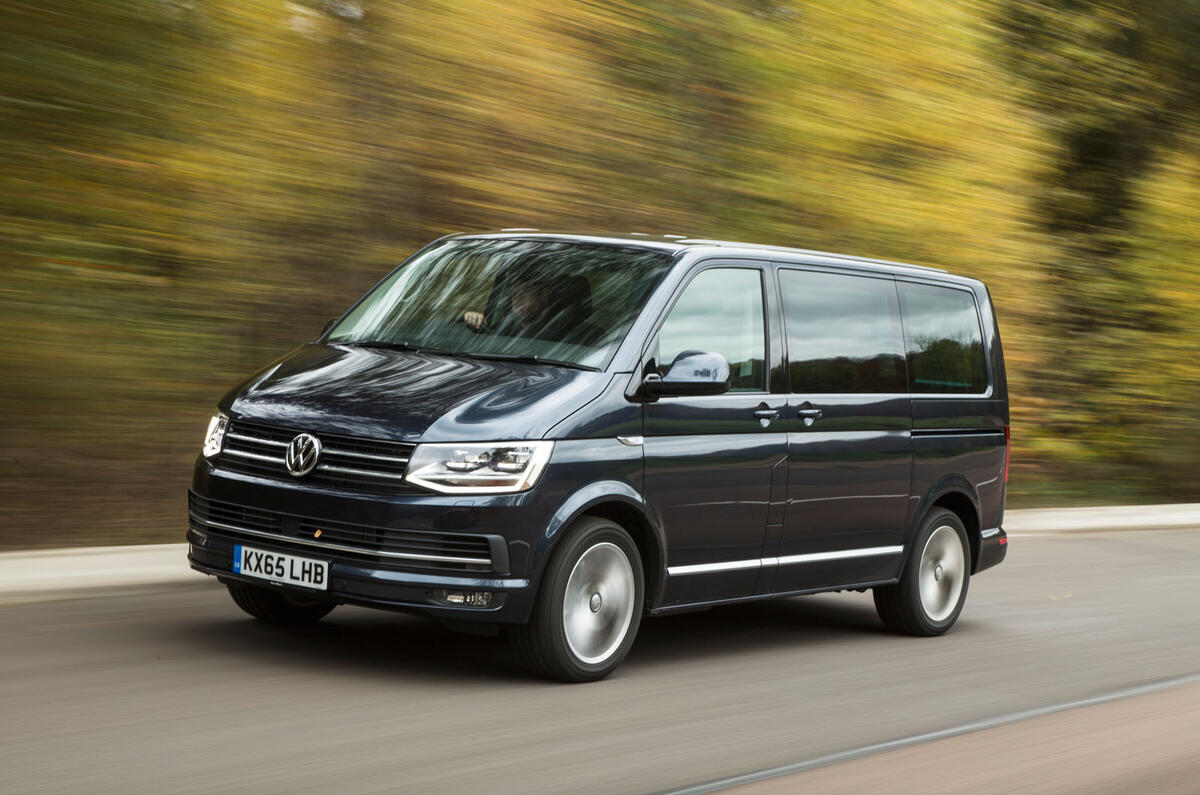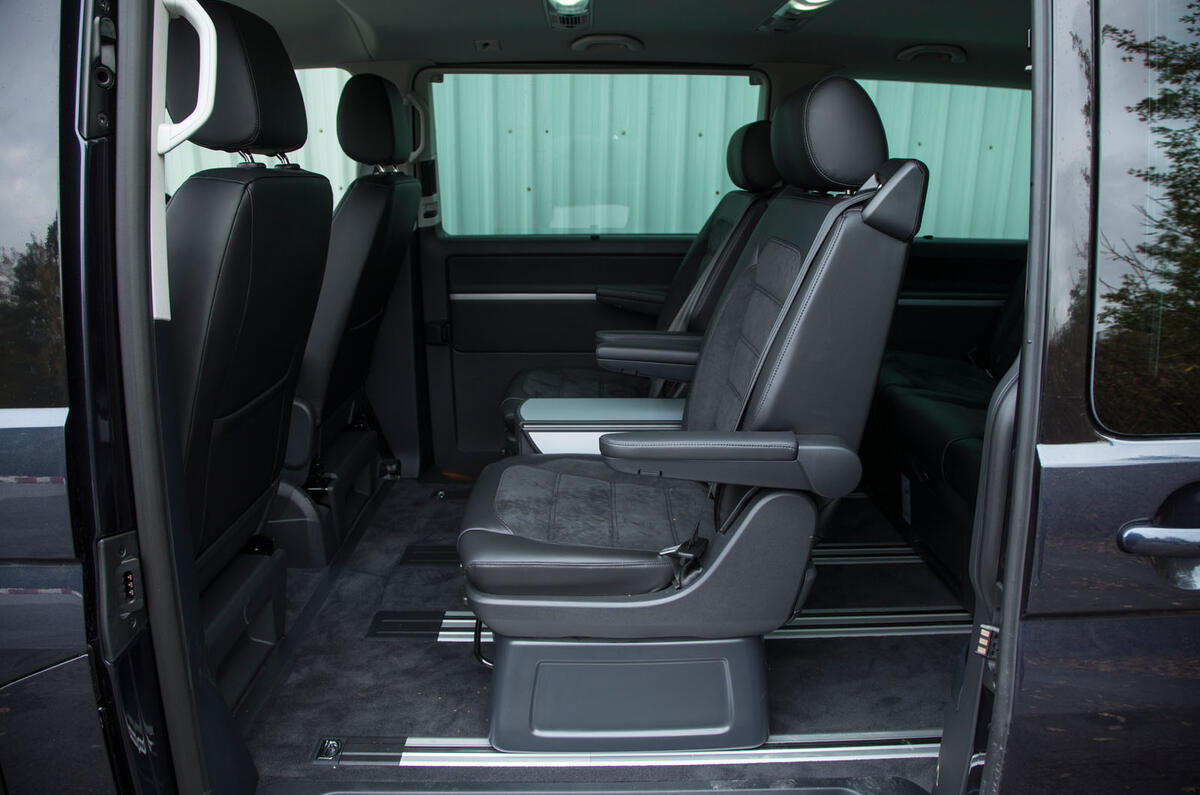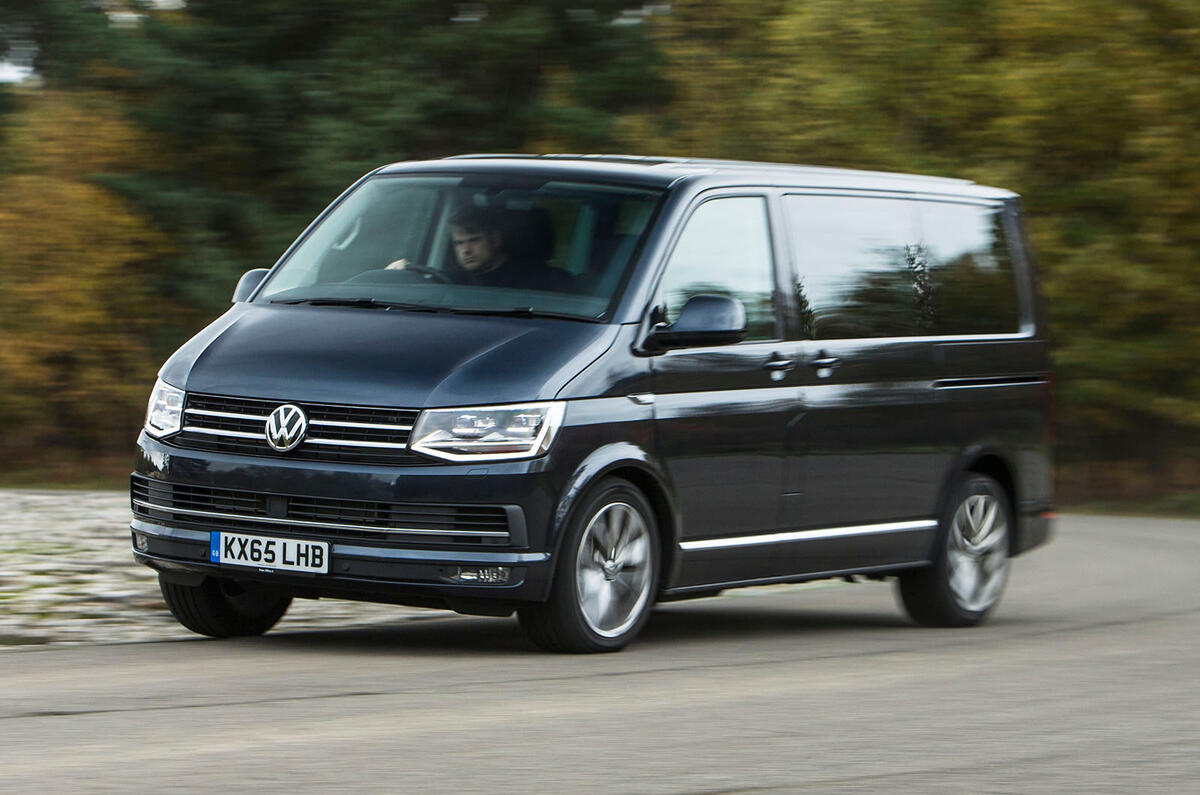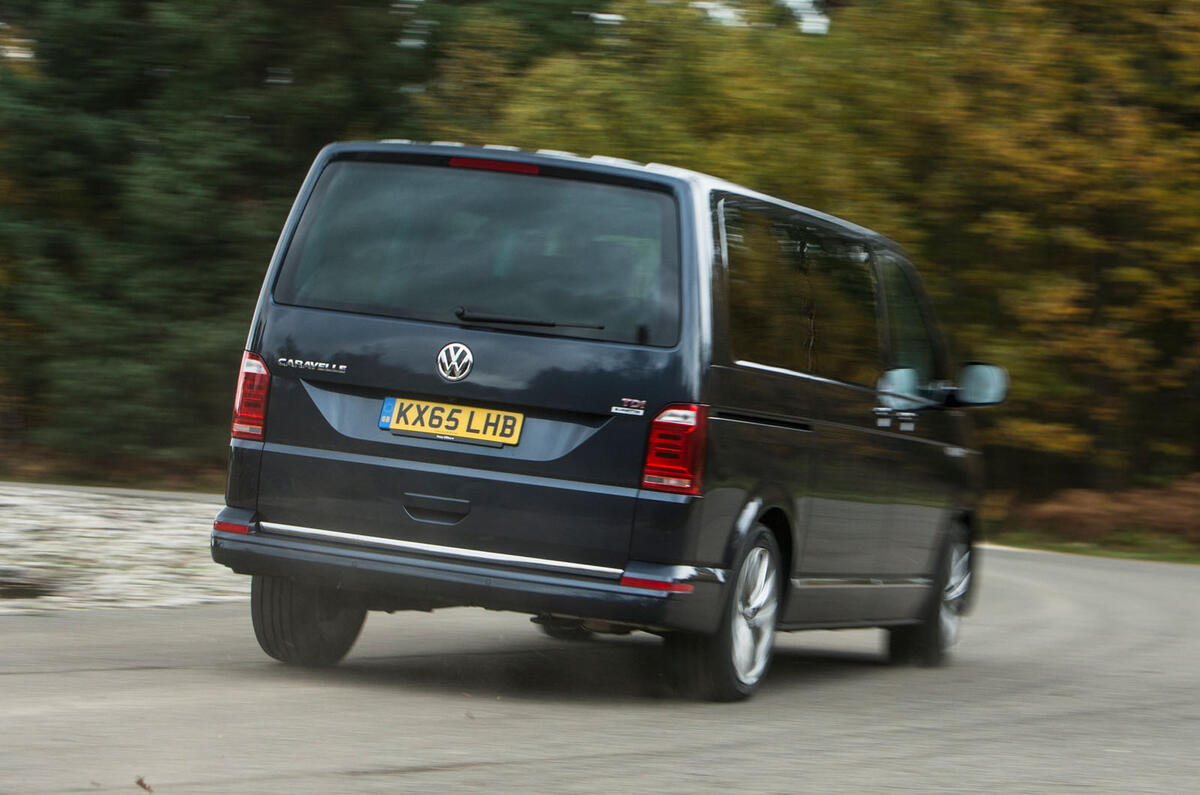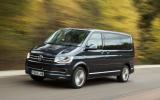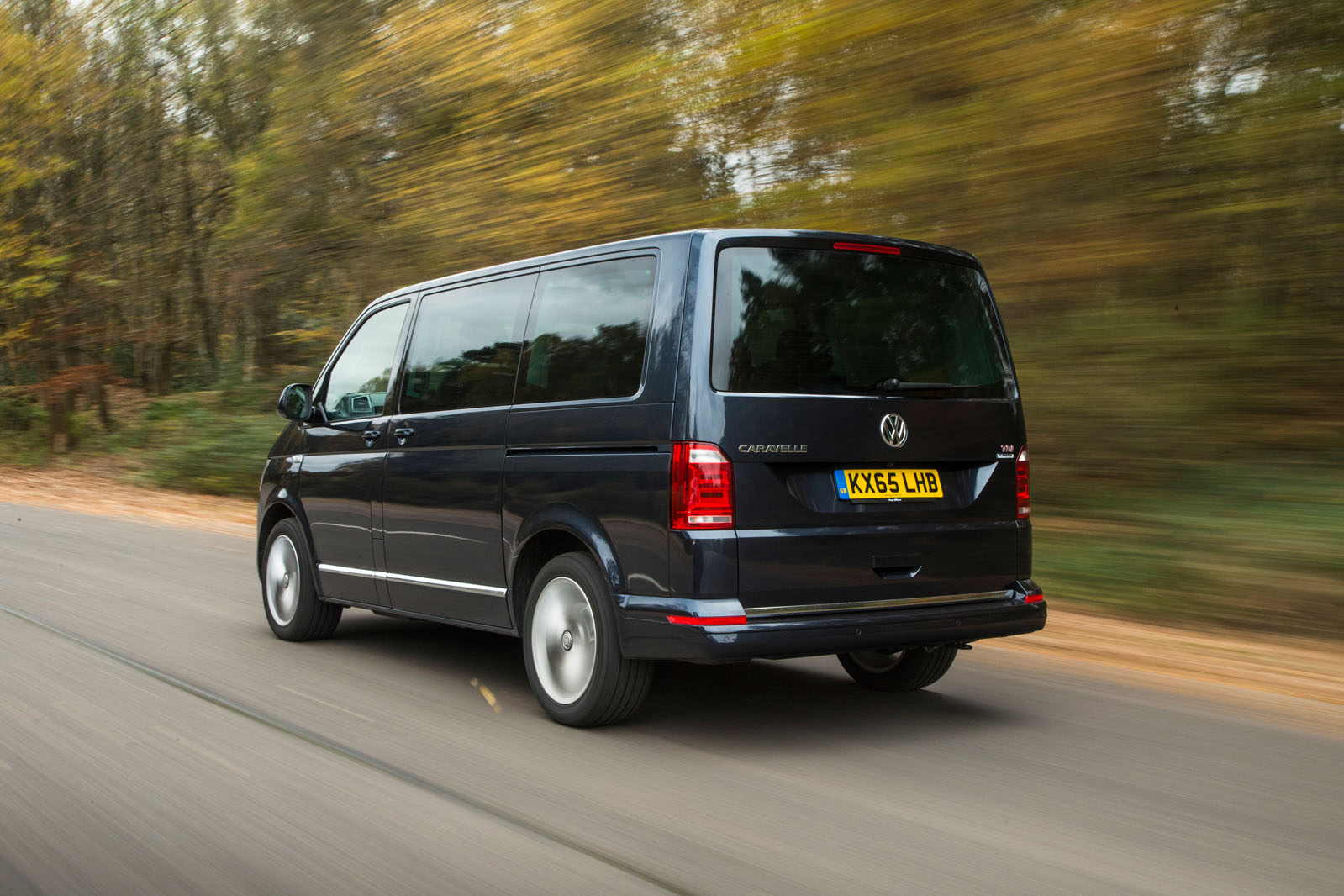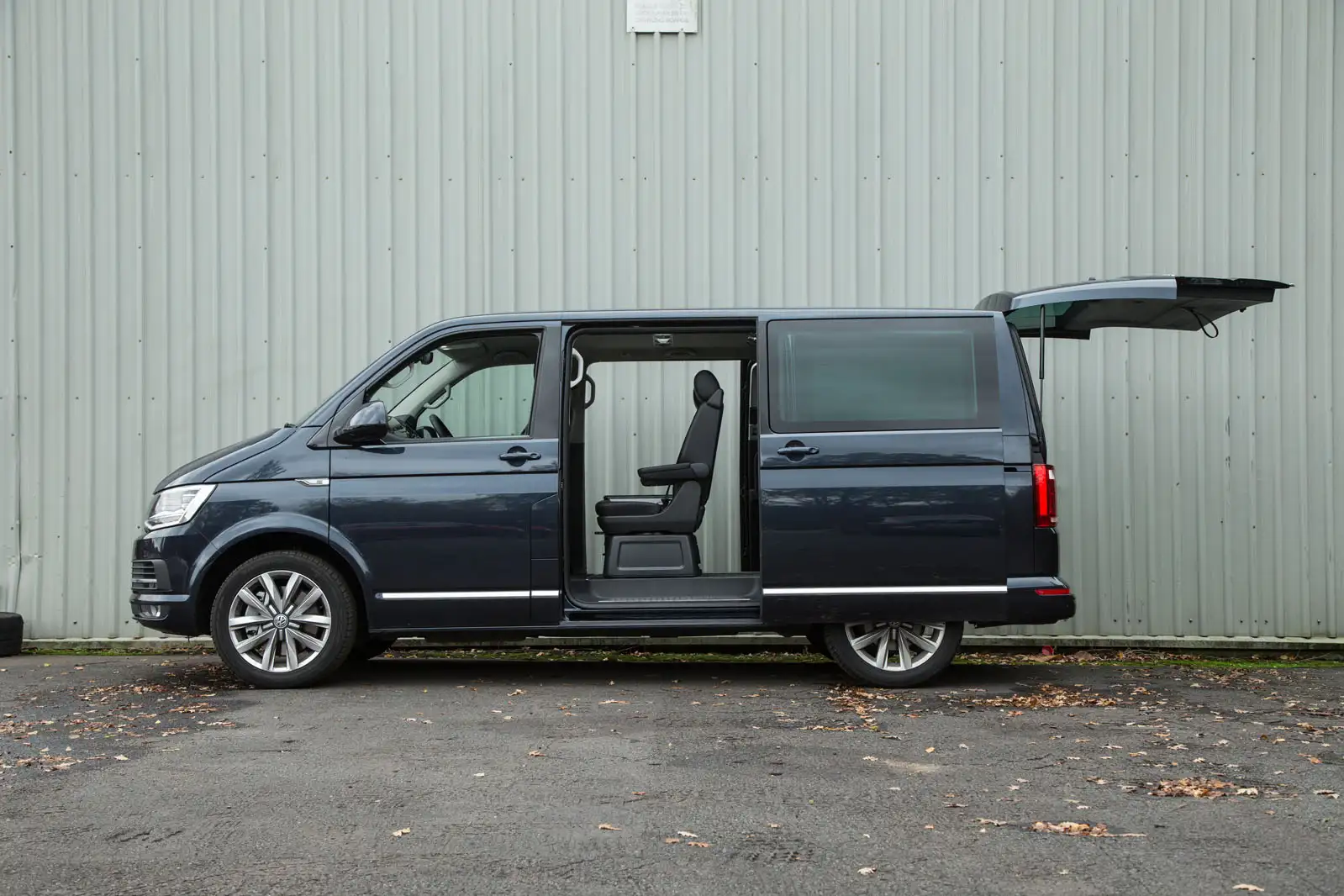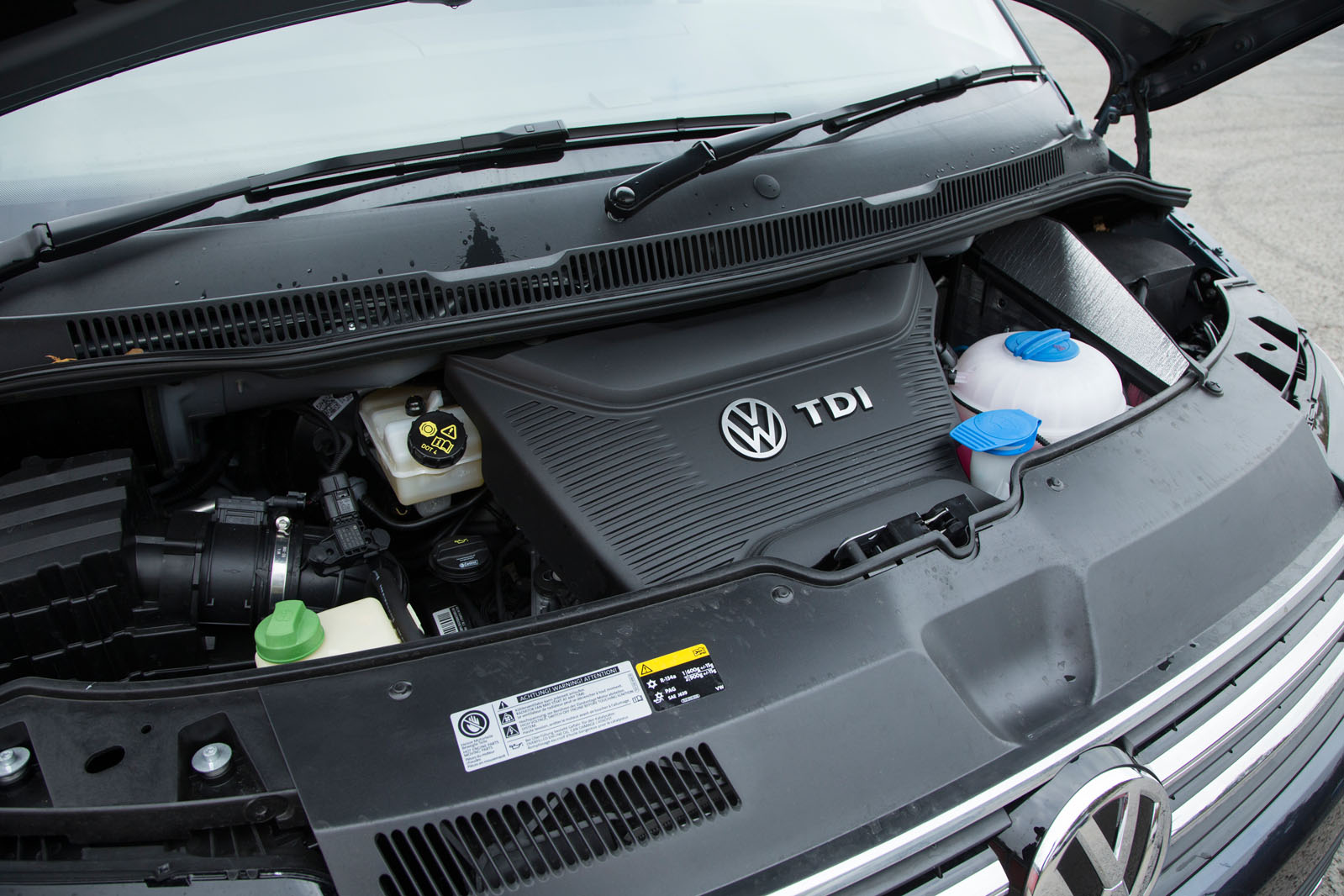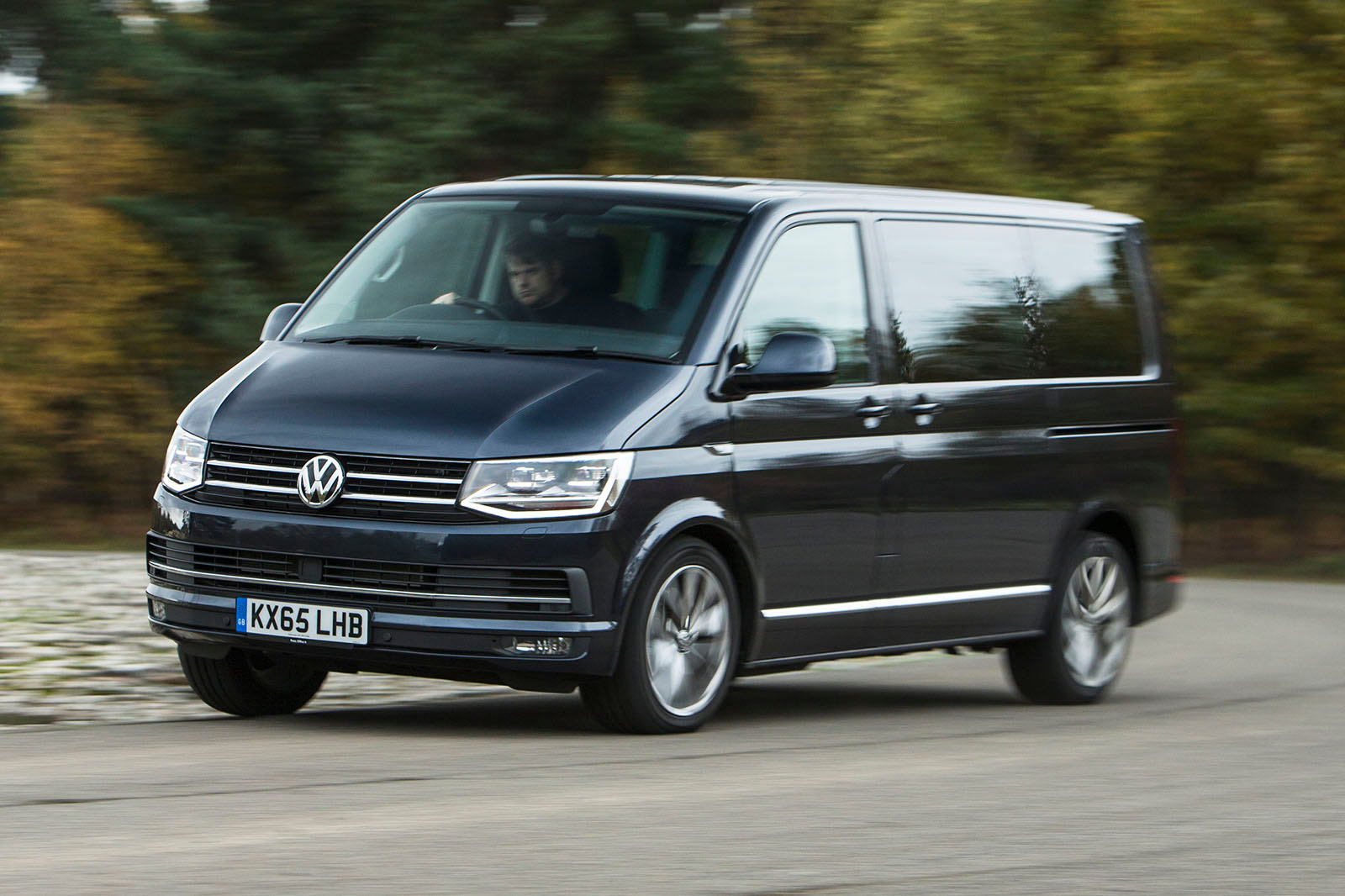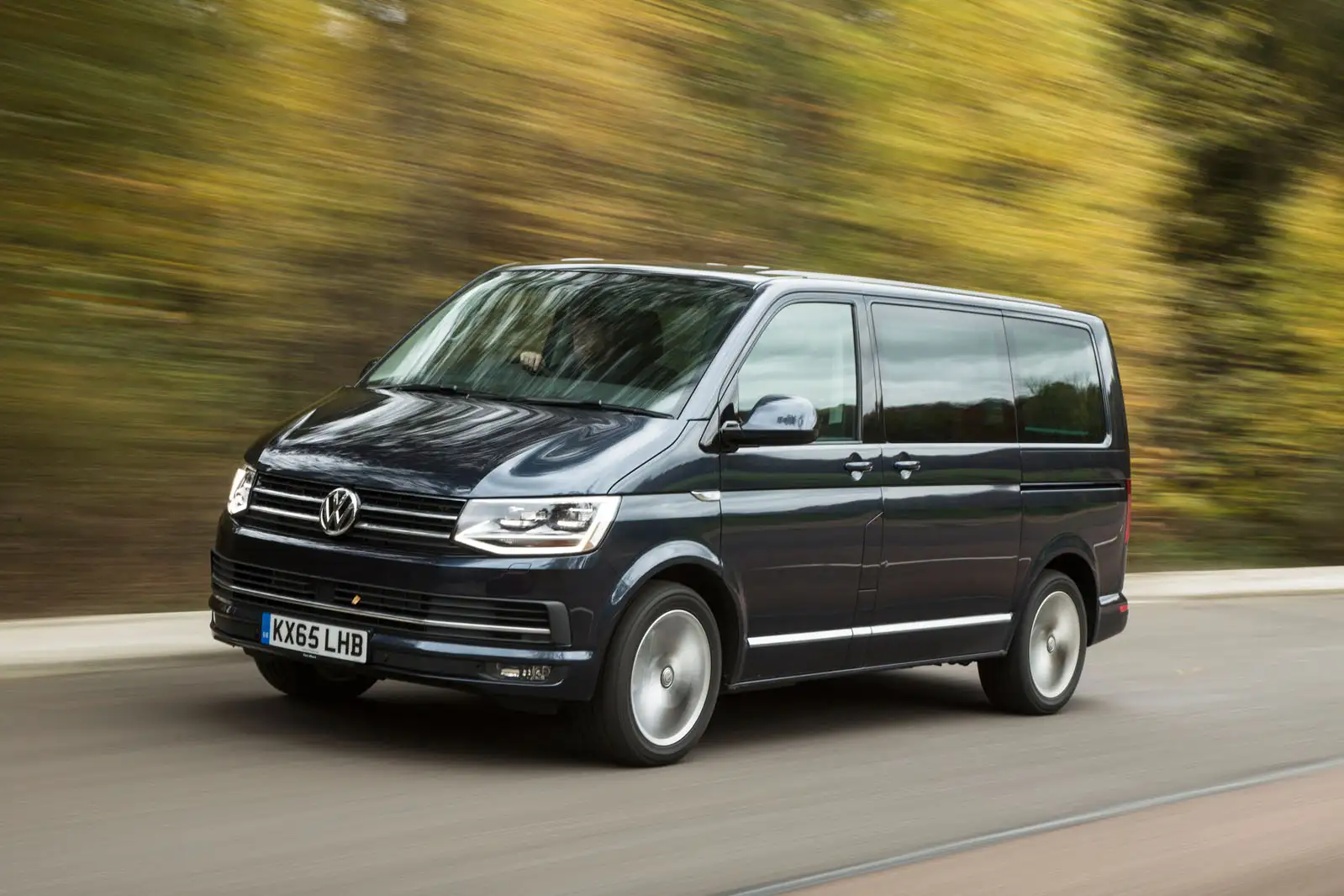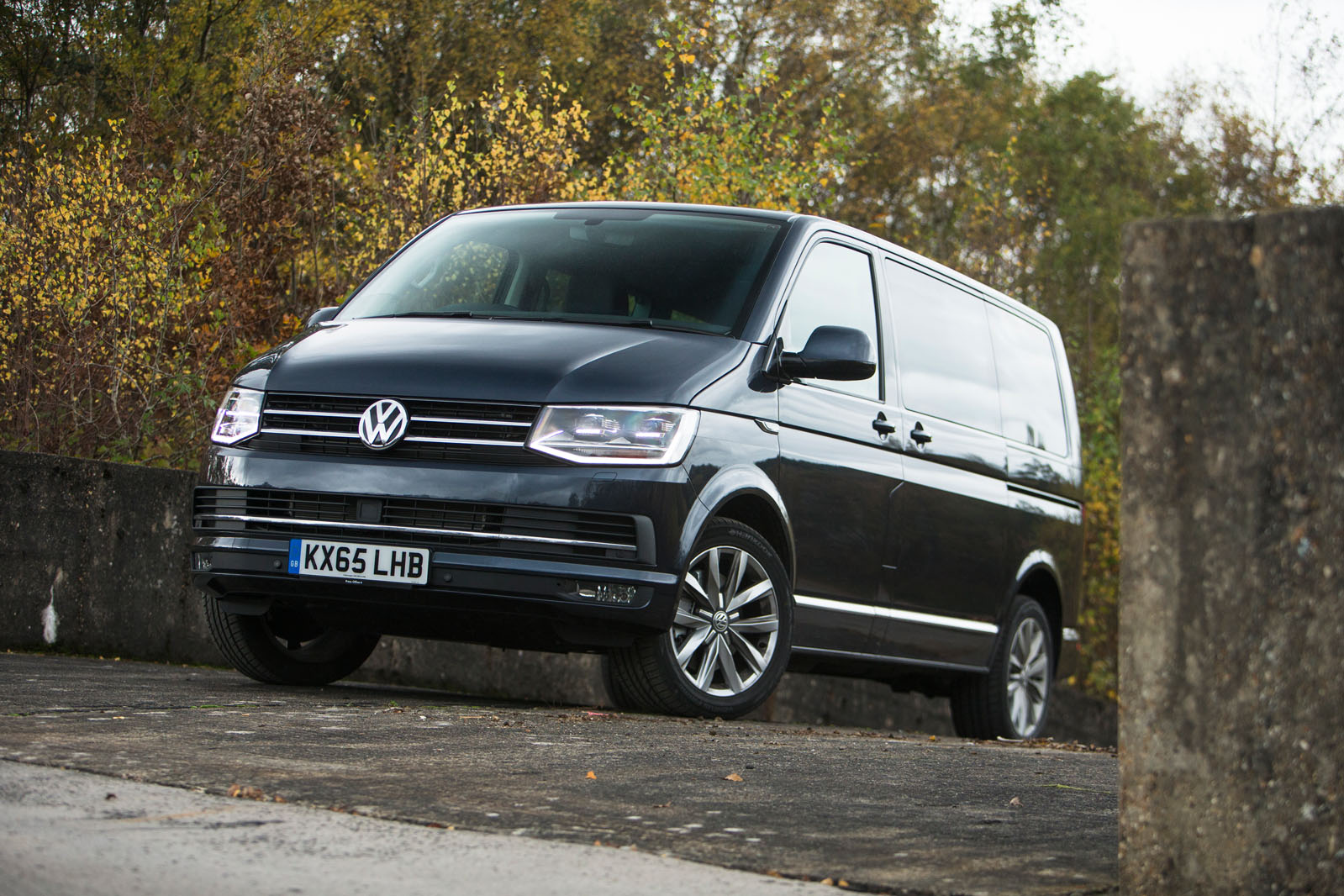Your impressions of being inside the Caravelle will be defined primarily by which door you use to get in.
Up front, the cab feels broadly similar to an upmarket, particularly cushy van’s. The driving position is one of straight arms and bent legs, and the seat is thick, comfy, part-leather-clad and high-mounted.
The view out is imperious, thanks to the remarkable expanse of very upright glass immediately ahead of you and to either side.
The driver’s seat has armrests on both sides, and there’s a short gearlever on the fascia for easy access, as well as typically clear VW-brand analogue instruments and centrally mounted multimedia and climate control consoles worthy of any of VW’s passenger cars.
Volkswagen’s Composition Colour radio with a 5.0in touchscreen comes as standard with both SE and Executive trim, but you have to spend extra to get either the Composition Media system with a bigger touchscreen or the full-house Discover Media Navigation Plus system, which was fitted to our test car.
The upgraded Discover set-up is pricey (£1320) but includes a media control system that lets you access it from remote devices connected wirelessly, plus an app control system via which you can access certain apps on your smartphone.
The navigation system is usable and intuitive, with clear mapping and directional prompts. VW’s familiar shortcut keys also make the other infotainment functions easy to access.
Material quality is more than respectable and perceived quality is enhanced by plenty of piano black and chrome trim.
Oddment storage, meanwhile, is almost embarrassingly abundant: dual gloveboxes, an additional lidded cubby on the roll-top dashboard, another in the centre stack and a drawer with extra storage and cupholders immediately below, as well as double door pockets, the lower ones positioned too low to access on the move, unfortunately.
But only when you explore further aft do you discover what the Caravelle is really about. Open the motorised sliding side door and you’ll find individual second-row captain’s chairs that swivel and slide, combining with the sliding three-seat bench further back to allow you to create a very convivial five-seat mobile meeting room.
All three seat units slide fore and aft on a system of four rails, the middle ones also carrying a fold-out table that can be positioned conveniently for any of the five seats and comes as part of the Executive spec.
Alternatively, the middle-row chairs can be removed to make extra carrying or lounging space. They’re heavy, predictably, and the process isn’t the work of a few seconds.
But if you do that, in five-seat mode and with the third-row bench slid all the way forwards, the Caravelle can at once provide more leg and head room than a Mercedes-Benz S-Class (although admittedly a less comfortable seat), more boot loading length than most saloon cars and much more loading width and height.
The Caravelle’s talents don’t end with merely conveying its passengers, either. A wander through the brochure reveals the potential to specify a bigger 12-volt battery, a parking heater, laminated glass all round, window blinds and a Good Night Package that adds a couple of extra shelves to the sliding, folding three-seat bench to enable it to be converted into a bed.
And if that’s still not domesticated enough for you, there’s always the Caravelle’s fully fledged camper van sibling, the California, which gets yet another bed under the flip-up roof.
There are three Caravelle trims and two Calfornia trims to choose from. The entry-level SE models get 17in alloy wheels, fabric upholstery, Bluetooth, USB connectivity and lumbar adjustment for the front seats, while upgrading to Executive gets you Alcantara upholstery, heated front seats, cruise control, a multifunction steering wheel, automatic lights and wipers, electric sliding doors, lashings of chrome and tri-zone climate control.
Opt for the Caravelle Generation Six and you will get a retro looking van with two-tone paint job, 18in disc alloys, adaptive cruise control, sat nav, parking sensors, LED headlights, and adaptive chassis control.
The California is available in entry-level Beach and range-topping Ocean trims. The former comes with a pop-up aluminium framed roof, folding table and chairs, a two-person bed, a folding bench, extra insulated side windows, while the California Ocean includes a 42-litre cool/warm box, a gas stove, a kitchen unit, fresh water storage unit and a built-in wardrobe. A true home away from home.


